Shaking the Box of Tradition
In an article for PBS titled “How Cell Phones are Killing Face-to-Face Interactions,” Mark Glasser notes, “The idea of being present in the moment is disappearing.” Now the focus is on being able to be connected to what is going on in other places while attempting, at the very same time, to engage with what’s happening around you. Such a goal is impossible, and shifts considerable attention to what is happening somewhere else. Glasser concludes, “We devalue our current situation happening in front of us.”
This general phenomenon can be observed during theatre performances. Every show usually begins with the obligatory announcement, “Please turn off your cell phones and refrain from texting during the production.” However, patrons accustomed to regular digital connectivity are more inclined to shut off and disengage once the lights are turned off. Many, of course, in spite of announcements, utilize their digital devices during the performance. In this new age of social media, we as theatremakers are attempting to engage with an audience that is inclined to feel that what is happening on Twitter or Facebook is all important, and that the text that they are receiving and responding to is more essential then the live performance they are watching.
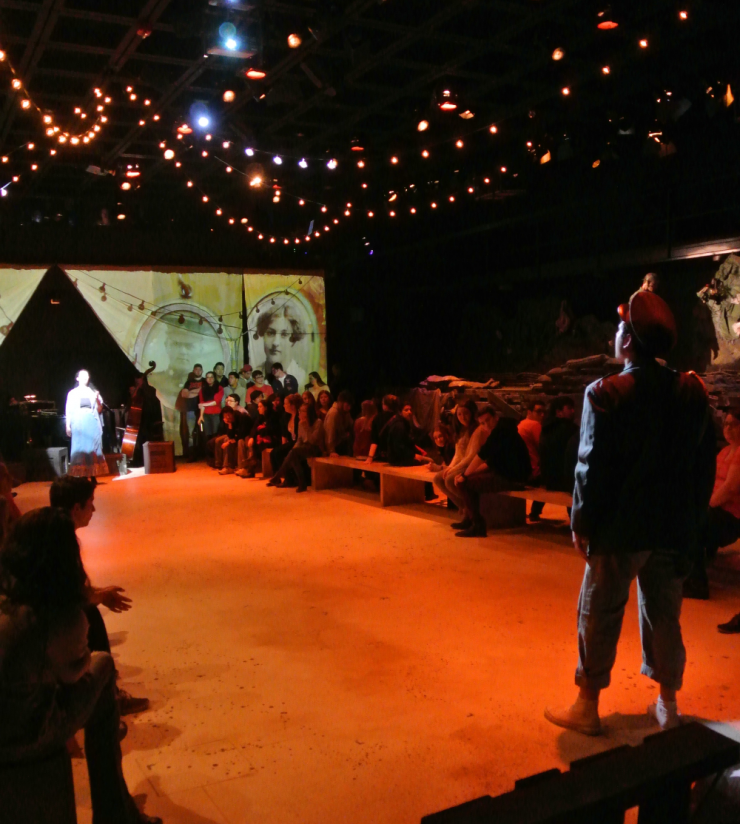
In a Ted Talk, Social Psychologist PhD Sherry Turkle describes this new concept: “Being together while not being together.” In her book Alone Together she describes her findings regarding the ways technology, social media, and always being “plugged in” is changing us as a society. In the Ted Talk, Sherry discusses how we use technology to hide from each other—a relationship she refers to as the “Goldilocks Effect.” By this she means that we as a society we are not too distant from one another, and we are not too close; we maintain just the right amount of distance. What this gives us, she perceives, is control, although social media obviously also enables some people to act instantaneously, in ways that reflect little self-control. Sherry emphasizes that we are able, if we choose, to restrict what we say, when we say it, and we can even delete what we say if we change our minds. We have the option to step back, take a breath, and filter how we respond.
Just Right Distance
Theatre audiences, when seeing a piece of work set in a proscenium, encounter a stage that is perfectly crafted and designed for the optimal amount of distance between the audience to the performer. It is not too far away, not too close—it is just right. The audience has just enough space to view and watch the performance but also some amount of separation from the work. Architects spend years, when planning a theatre, figuring out sightlines, how high the audience seating should be raked to have the maximum amount of sellable seats, and how much space is necessary between the row of seats for someone to be comfortable but not lower the number of seats. However, one thing missing from the equation is how to counteract the distance and the disengagement that this seating arrangement encourages in our audiences.
The proscenium stage offers an outsider’s perspective on the action of a play. It engages our voyeuristic tendencies as humans and as audience members and gives the illusion of looking though a keyhole into a private situation being presented on stage.
Through a Keyhole
In the early twentieth century there was a significant movement in rejecting the proscenium stage. In his book The History and Theory of Environmental Scenography, Arnold Aronson describes the rejection as a search for “ a greater intimacy, a greater theatricality, or a greater realism.” He continues to explain that while the ensuing period of reform reflected various goals, they all shared a common thread: “all the experimental forms were conscious attempts to alter the relationship to the performance” (Aronson 29). The proscenium stage offers an outsider’s perspective on the action of a play. It engages our voyeuristic tendencies as humans and as audience members. The proscenium stage gives the illusion of looking though a keyhole into a private situation being presented on stage. Ibsen’s A Doll’s House, for example, is a drama that invites the audience into the home of Torvald and Nora. They are meant to witness Nora’s change from being a simple house wife, to a blackmail victim, to a strong woman willing to leave and take her life into her own control. However, the audience lurks silently in the darkness and is not asked to participate, comment, or react to what they are witnessing. The widely used keyhole and peep show metaphors are apt (Pierce 148). In a proscenium stage production of the play, the audience is even offered the opportunity to disengage their feelings and emotions when the lights go down.
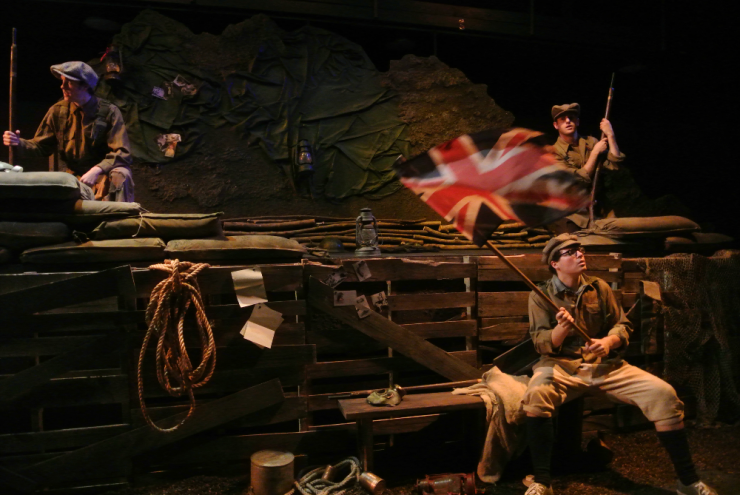
In his article “Intimacy in the Theatre,” Roger Pierce has explored the concept of intimacy in connection to reforms of the proscenium. Pierce quotes Robert Brustein as saying “Actors who swear that the proscenium arch cuts off their communication with the audience, leaving them with the sensation of dropping their emotion into a great dark mouth that swallows it up without sending anything back” (Pierce 147). To be sure, audiences are not able to connect and engage with the performer on stage and deliver emotion back. What, however, does intimacy in the theatre truly mean? Does it concern the physical distance the audience is from the stage? Does intimacy mean how private or tight a moment is in a piece of work?
In the early 1900s, the futurist movement endeavored to reshape the relationship between audience and performer. There was significant push to break the proscenium line and extend the action out into the audience, exploring possibilities of “performing amidst the spectators” (Aronson 34). One of the first such futurist performances was titled Piedigortta (1914) by Francesco Cangiullo. In this performance they reshaped the gallery by having various performances happening at the same time in different parts of the hall. The audience was placed in the middle, able to move through the performance as they saw fit (Aronson 34). The goal of these performances was to make the audience member an active participant, and to surround them with the story.
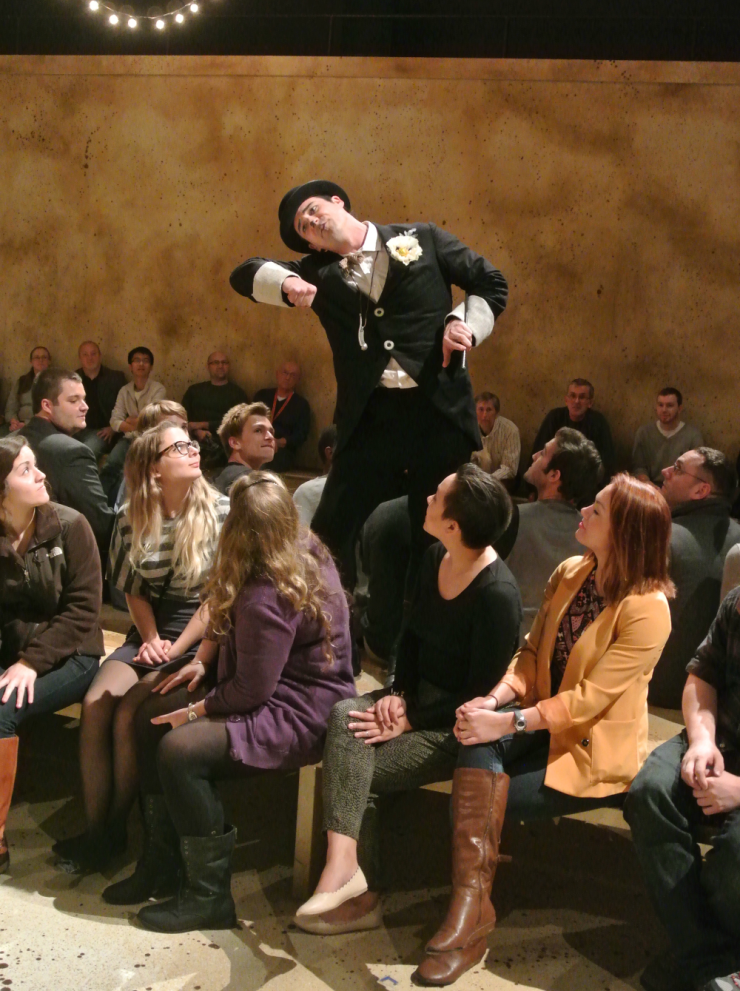
Tyrone Guthrie (1900–1971) and Stephen Joseph (1921–67) are two more recent directors who both argued for a more open stage type of theatre environment. For Joseph, this led to him establishing a theatre in the round. Guthrie and Joseph both seemed to emphasize intimacy as a kind of audience self awareness, the thought being that if another audience member saw another audience member, they would be more connected and feel like they are part of the action. The audience would no longer be just a secret viewer of someone else’s private moment (Pierce 147). Instead the story on stage becomes something they are supposed to see and engage with. Guthrie and Joseph invited the audience to react, engage, and even participate in the story. Nora, in this approach, is no longer a character being victimized in the privacy on her own home; instead, the audience becomes a participant in the victimizing. They become part of the journey that helps Nora become an independent woman and transcend the limits of Victorian society.
Pierce, in his seven-pronged definition of theatrical intimacy, first profiles the closeness between audience and performer, and then heightened audience self awareness. He next notes the situation in which an audience can express itself, as well as that when a feeling of community is sparked by the work. Enhanced intimacy involves more probing kinds of self-examination, or soul searching, and an increased focus on the actor rather then on spectacle. The most intensely intimate scenarios he characterizes as “the opposite of Aesthetic Distance.” (Pierce 151). An active effort to engender theatrical intimacy, it would seem, offers much to counteract some of the issues presented by today’s technology and social media driven society.
If we remove the comfortable, familiar nature of the proscenium, we can help an audience reengage with work we as theatremakers are creating.
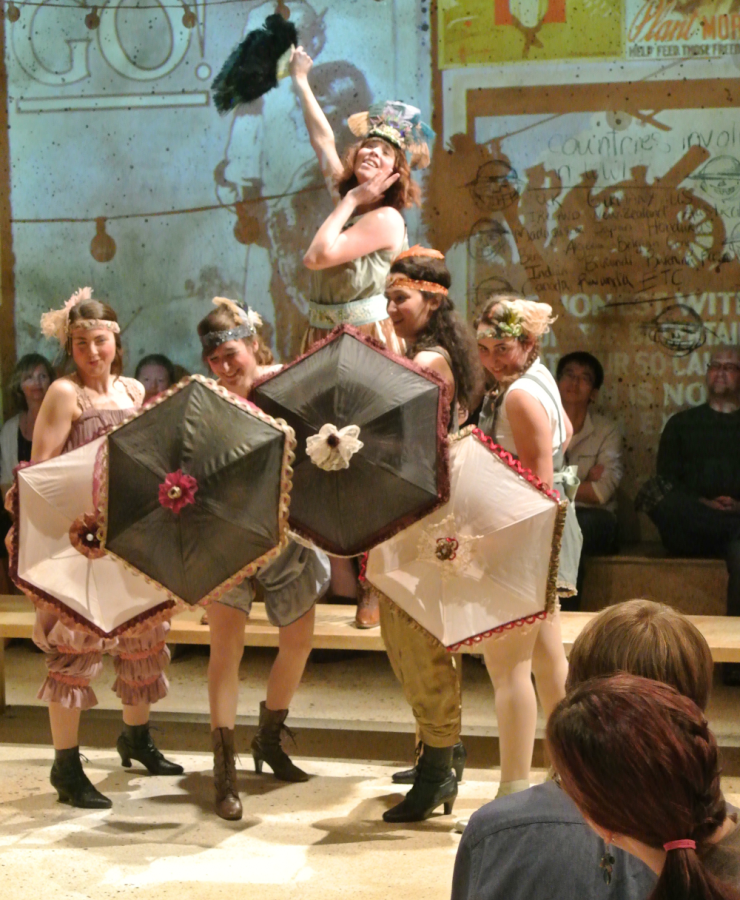
As mentioned earlier, in Turkle’s “Goldilocks effect” the proscenium creates the perfect distance between the performer and the audience receiving the story. The audience is comfortable in their own space witnessing and peering into the story from afar. However, by eliminating this distance we create an environment where they are no longer comfortable and able to disengage. The audience has to look and pay attention to what is happening around them. If we remove the comfortable, familiar nature of the proscenium, we can help an audience reengage with work we as theatremakers are creating.
If we remove the boundaries and the “walls” that are being put up by the proscenium we will also create an audience that is vastly more alert and may be able to express themselves more freely. When we reduce formality we create an environment where it is okay to laugh in an awkward way or engage with a performer on stage. When a performer has an aside and is talking to the audience and is sharing their intimate private thoughts, the audience can engage, react, and share in the experience. The audience is no longer looking at the stage, but looking at performers and audience members alike. Everyone is a participant in the story and therefore invested in the story being told on stage.
George Fuchs, who used a shallow relief stage at the Künstler Theatre he established in Munich in 1907, once proclaimed: “The function of the stage is to stimulate and to satisfy an overpowering expectation. If we are so aroused that within the confines of convention we can not completely realize this emotion, we must rise above conventions” (Aronson 41). It is no longer a question if we should we break tradition, but instead a question of how and why we pursue fresh paths. At the very least, we must transcend the comfortable nature of the proscenium and shake our audiences awake. When conventional expectations are challenged, and we open the door to performers and audience members being in the same space, we heighten the self-awareness and self-critical potential. They leave the story thinking, and continuing to engage with the piece long after the show is.
Many reforms and developments in stage design in the early twentieth century were linked to forms of social and political activism. Recalling the stance espoused by Brecht, the character Sir Edward de Vere, Earl of Oxford, remarked in the film Anonymous, “All art is political, otherwise it would just be decoration. And all artists have something to say, otherwise they’d make shoes.” It is imperative, a century later that we aim to shake our audiences awake, and get them to engage instead of lapsing into a realm of texts, tweets, and Facebook messages. Promoting a fresh and much-needed sense of intimacy, by abandoning the proscenium stage, we can create an environment where society can again connect with each other on the most basic level, through interaction and storytelling.
All photos: Oh What a Lovely War, directed by Robert G. Anderson at Krannert Center for the Perfoming Arts, University of Illinois at Urbana-Champaign. Scenic design by Joe C. Klug, Costume design by Amy Chmielewski, Lighting design by Aaron Lichamer, Projections design by Joe Burke, Sound design by Tony Reimier, Props design by Megan Dietrich. Photos by Joe C. Klug.


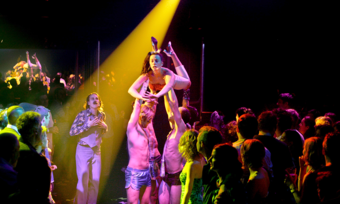



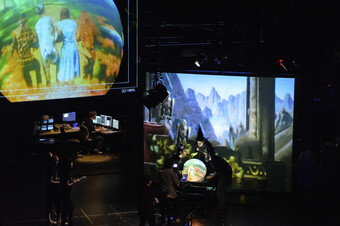

Comments
The article is just the start of the conversation—we want to know what you think about this subject, too! HowlRound is a space for knowledge-sharing, and we welcome spirited, thoughtful, and on-topic dialogue. Find our full comments policy here
Interesting article... but as someone who has never had a smart-phone,
and strongly dislikes in-the-round productions where other audience
members are in the line of sight just beyond the actors, I would be
devastated if the addicts ended up causing the loss of
traditional proscenium theater.